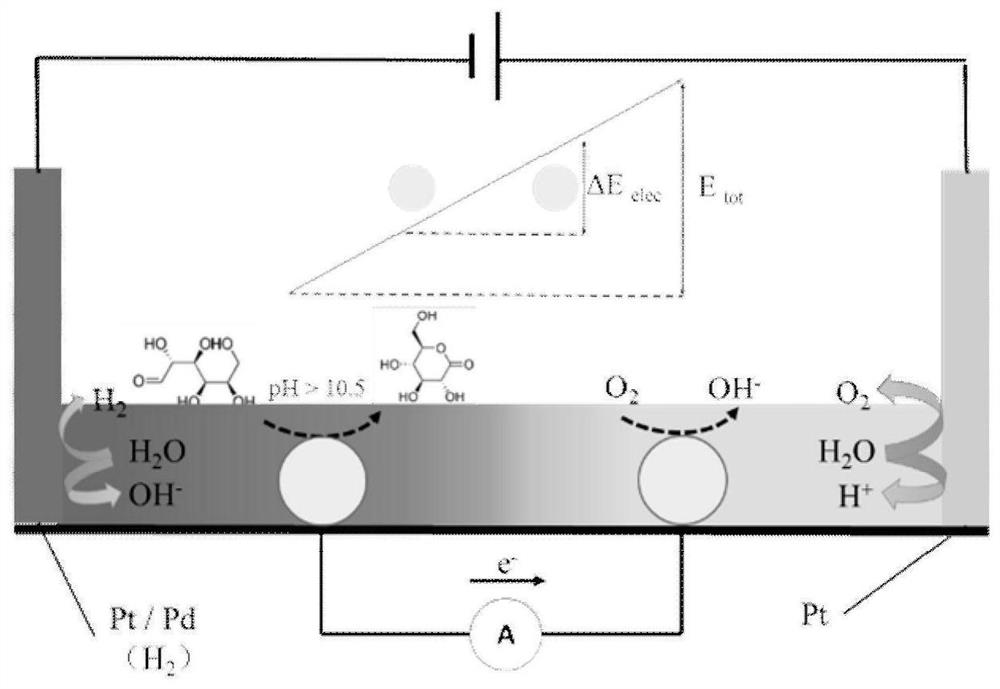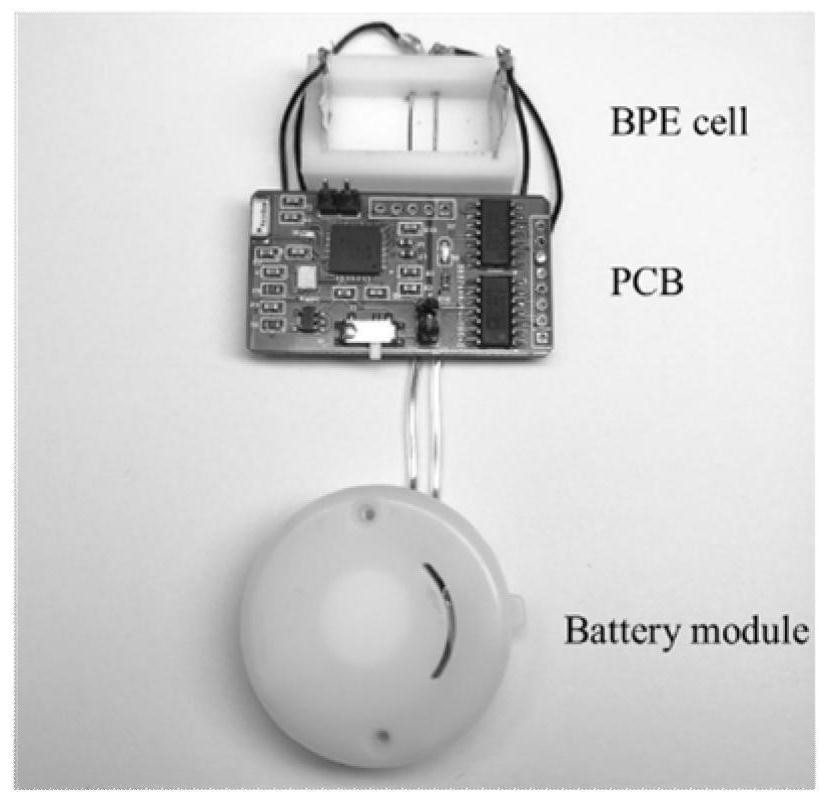Sensor based on bipolar electrode structure and method for non-enzyme detection of glucose
A bipolar electrode and sensor technology, used in instruments, measuring devices, scientific instruments, etc., can solve problems such as large background current, interference detection results, and device assembly effects, so as to avoid mutual interference and simplify power supply and control circuits.
- Summary
- Abstract
- Description
- Claims
- Application Information
AI Technical Summary
Problems solved by technology
Method used
Image
Examples
Embodiment Construction
[0026] The sensor based on the bipolar electrode structure in this implementation includes a photosensitive resin 3D printed electrochemical cell. Two relatively parallel Pt plate electrodes are arranged on both sides of the electrochemical cell, and one of the Pt plate electrodes is used as a cathode driving electrode to precipitate hydrogen. Its exterior is electroplated with Pd to absorb hydrogen, and two relatively parallel gold wire electrodes are set in the middle. After a voltage is applied to the driving electrode, a hydrogen evolution reaction occurs on the cathode of the driving electrode, and a large number of hydroxide ions are generated in the solution near the Pt plate electrode. Directional migration and diffusion from the cathode area to the anode area forms an alkaline environment around the bipolar electrode made of gold to achieve the purpose of catalyzing the non-enzyme oxidation reaction of glucose. In this way, only a single device is required for enzyme-...
PUM
| Property | Measurement | Unit |
|---|---|---|
| thickness | aaaaa | aaaaa |
Abstract
Description
Claims
Application Information
 Login to View More
Login to View More - Generate Ideas
- Intellectual Property
- Life Sciences
- Materials
- Tech Scout
- Unparalleled Data Quality
- Higher Quality Content
- 60% Fewer Hallucinations
Browse by: Latest US Patents, China's latest patents, Technical Efficacy Thesaurus, Application Domain, Technology Topic, Popular Technical Reports.
© 2025 PatSnap. All rights reserved.Legal|Privacy policy|Modern Slavery Act Transparency Statement|Sitemap|About US| Contact US: help@patsnap.com



